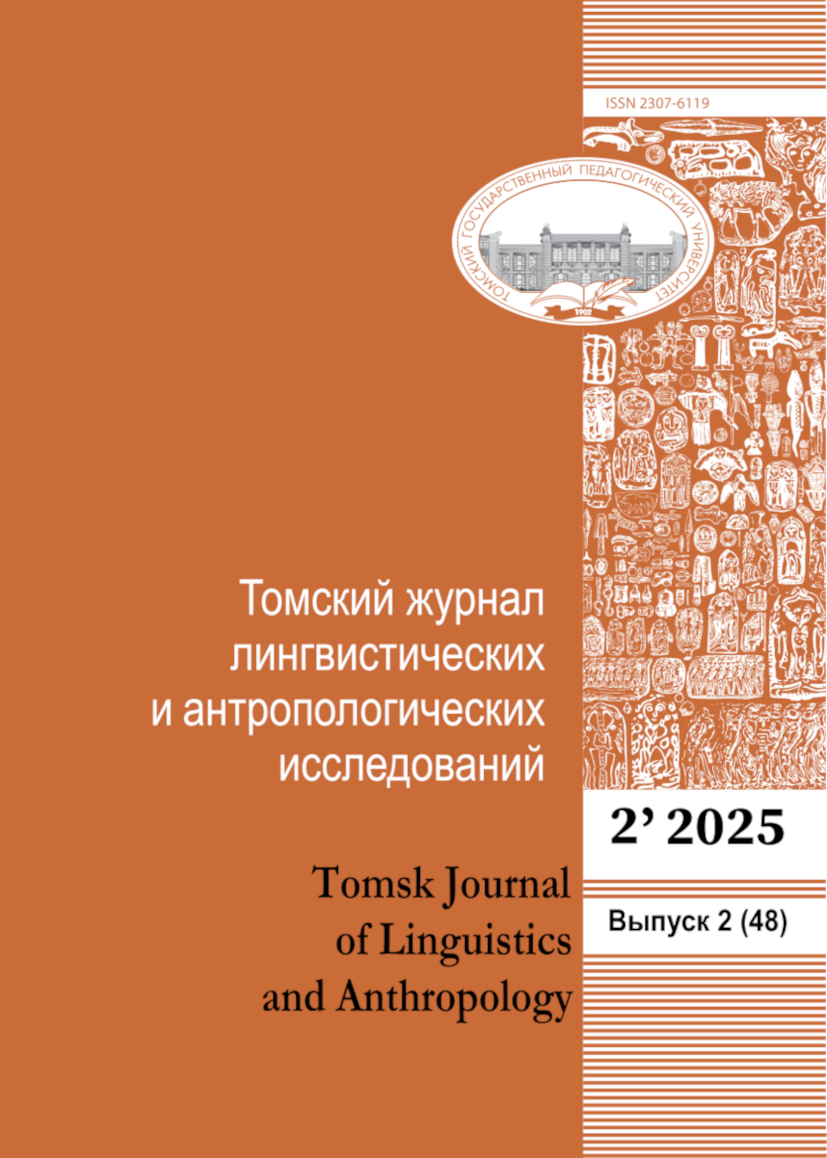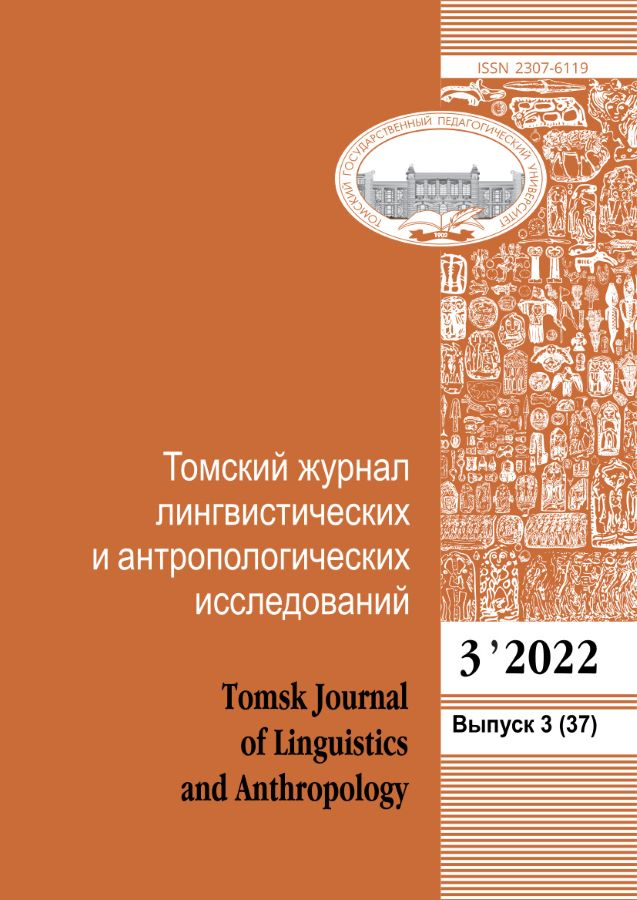Antonov N. K. Materialy po istoricheskoj leksike jakutskogo jazyka [Materials on the historical vocabulary of the Yakut language]. Jakutsk: Jakutskoe knizhnoe izdatel'stvo, 1971. 174 p. (in Russian).Almadakova N. D. Grammaticheskaja kategorija zaloga v altajskom jazyke [Grammatical category of the pledge in the Altai language]. Gorno-Altajsk, 2005. 118 p. (in Russian).Betlingk O. N. O jazyke jakutov [About the Yakut language] // Per. s nem. V. I. Rassadina. Novosibirsk: Nauka, 1990. 644 p. (in Russian).Budazhanova L. B. K probleme slozhnosostavnyh slov v burjatskom jazyke (na materiale buddijskoj leksiki) [On the problem of compound words in the Buryat language (based on the material of Buddhist vocabulary)] // Vestnik Burjatskogo gosudarstvennogo universiteta: Jazyk. Literatura. Kul'tura. 2018. Vyp. 2. P. 3–9. (in Russian).GSAJa – Grammatika sovremennogo altajskogo jazyka. Morfologija [Grammar of the modern Altai language. Morphology]. Gorno-Altajsk, 2017. 576 p. (in Russian).GBJa – Grammatika burjatskogo jazyka. Fonetika i morfologija [Grammar of the Buryat language. Phonetics and morphology]. M.: Izd-vo Vostochnoj literatury, 1962. 340 p. (in Russian).GSJaLJa – Grammatika sovremennogo jakutskogo literaturnogo jazyka. Fonetika i morfologija [Grammar of the modern Yakut literary language. Phonetics and morphology]. M.: Nauka, 1982. 496 p. (in Russian).Dondukov U.-Zh. Sh. Slovoobrazovanie mongol'skih jazykov [Word formation of the Mongolian languages]. Ulan-Udje, 1993. 230 p. (in Russian).Dybo A. V. Semanticheskaja rekonstrukcija v altajskoj jetimologii. Somaticheskie terminy (plechevoj sustav) [Semantic reconstruction in Altaic etymology. Somatic terms (shoulder joint)]. M., 1996. 386 p.Dyrheeva G. A., Haranutova D. Sh., Bardamova E. A. Parnye slova i parnoe slovoobrazovanie v burjatskom jazyke [Paired words and paired word formation in the Buryat language]. Ulan-Udje: Izd-vo Burjatskogo gosuniversiteta, 2014. 208 p. (in Russian).Ivanov S. A. Leksicheskie osobennosti govorov jakutskogo jazyka [Lexical features of the dialects of the Yakut language]. Novosibirsk: Nauka, 2017. 392 p. (in Russian).Ivanov S. A. Obrazovanie dialektnoj sistemy jakutskogo jazyka [Formation of the dialect system of the Yakut language]. Novosibirsk: Nauka, 2021. 256 p. (in Russian).Ivanova I. B. Affiksal'noe imennoe slovoobrazovanie v sovremennom jakutskom jazyke (na materiale otglagol'nyh imen sushhestvitel'nyh) [Affixal nominal word formation in the modern Yakut language (based on the material of verbal nouns)]. Avtoref…kand. diss. Jakutsk, 2011. 22 p. (in Russian).Kaluzhinskij Ct. Jetimologicheskie issledovanija po jakutskomu jazyku. Dvuslozhnye osnovy [Etymological research on the Yakut language. Two – syllable basics]. (II) // Rocznik orientalistyczny. 1978. T. XL. Z. 1. P. 71–82. (in Russian).Kolesnikova A. V. K harakteristike chastej tela cheloveka v tunguso-man'chzhurskih jazykah [On the characterization of human body parts in the Tungusic-Manchu languages] // Ocherki sravnitel'noj leksikologii altajskih jazykov. – Leningrad: Nauka, 1972. P. 257–336. (in Russian).Kolesnikova A. V. Affiksal'noe glagoloobrazovanie v altajskom jazyke v sopostavlenii s drevnetjurkskim jazykom [Affixal verb formation in the Altai language in comparison with the ancient Turkic language]. Avtoref… na soiskanie diss. dokt. filol. n. Novosibirsk, 2004. (in Russian).Musaev K. M. Leksikologija tjurkskih jazykov [Lexicology of the Turkic languages]. M.: Nauka, 1984. 226 p. (in Russian).Okoneshnikov E. I. Lingvisticheskie aspekty terminologii jakutskogo jazyka [Linguistic aspects of the terminology of the Yakut language]. Avtoref. dokt…diss. Jakutsk, 2005. 52 p. (in Russian)Orlovskaja M. N. Imena sushhestvitel'nye i prilagatel'nye v sovremennom mongol'skom jazyke [Nouns and adjectives in modern Mongolian]. M.: Izd-vo Vostochnoj literatury, 1961. 114 p. (in Russian).Rassadin V. I. Ocherki po morfologii i slovoobrazovaniju mongol'skih jazykov [Essays on the morphology and word formation of the Mongolian languages]. Jelista, 2008. 232 p. (in Russian).SIGTJa 1988 – Sravnitel'no-istoricheskaja grammatika tjurkskih jazykov: Morfologija [Comparative historical Grammar of the Turkic languages: Morphology]. M.: «Nauka», 1988. 560 p. (in Russian).SIGTJa 2001 – Sravnitel'no-istoricheskaja grammatika tjurkskih jazykov: Leksika [Comparative historical Grammar of the Turkic languages: Vocabulary]. M.: «Nauka», 2001. 822 p. (in Russian).Tarakanova I. M. Slovoobrazovanie imen sushhestvitel'nyh v hakasskom jazyke (v sopostavitel'nom aspekte) [Word formation of nouns in the Khakass language (in a comparative aspect)]. Abakan: Hakasskoe knizh. izd-vo, 2008. 174 p. (in Russian).Tybykova A. T. Orfografija i punktuacija altajskogo jazyka [Spelling and punctuation of the Altai language]. Gorno-Altajsk, 1981. (in Russian).Haranutova D. Sh. Burjatskoe slovoobrazovanie: strukturno-semanticheskaja organizacija [Buryat word formation: structural and semantic organization]. Ulan-Udje: Izd-vo Burjatskogo gosuniversiteta, 2012. 269 p. (in Russian).Chajchina E. V. Leksiko-semanticheskoe vzaimootnoshenie komponentov parnyh slov v altajskom jazyke [Lexicosemantic relationship of the components of paired words in the Altai language] // Jazyki korennyh narodov Sibiri. Novosibirsk, 2004. Pp. 115–120. (in Russian).Shagdarov L. D., Shagdarova D. L. Slozhnoe slovo v burjatskom jazyke [A complex word in the Buryat language]. Ulan-Udje: Izd-vo Burjatskogo gosuniversiteta, 2015. 265 p. (in Russian).Shherbak A. M. O haraktere leksicheskih vzaimosvjazej tjurkskih, mongol'skih i tunguso-man'chzhurskih jazykov [On the nature of lexical interrelations of the Turkic, Mongolian and Tungusic-Manchu languages] // Voprosy jazykoznanija, 1966, № 3. (in Russian).Shherbak A. M. Ocherki po sravnitel'noj morfologii tjurkskih jazykov (Imja) [Essays on the comparative morphology of the Turkic languages (Name)]. Leningrad: Nauka, 1977. 182 p. (in Russian).Cincius V. I. Zadachi sravnitel'noj leksikologii altajskih jazykov [Tasks of comparative lexicology of the Altai languages] // Ocherki sravnitel'noj leksikologii altajskih jazykov. Leningrad: Nauka, 1972. Pp. 3–14. (in Russian).Kaluzinsky St. Mongolische Elemente in der Jakutischen Sprache. Warszawa, 1961. www.buryat-lang.ru – Russko-burjatskij slovar'.
 9-19
9-19


 20-30
20-30


 31-41
31-41


 42-54
42-54


 55-68
55-68


 69-87
69-87


 88-96
88-96


 97-109
97-109


 110-116
110-116


 117-127
117-127


 128-141
128-141


 142-148
142-148


 149-159
149-159


 160-170
160-170


 171-176
171-176












